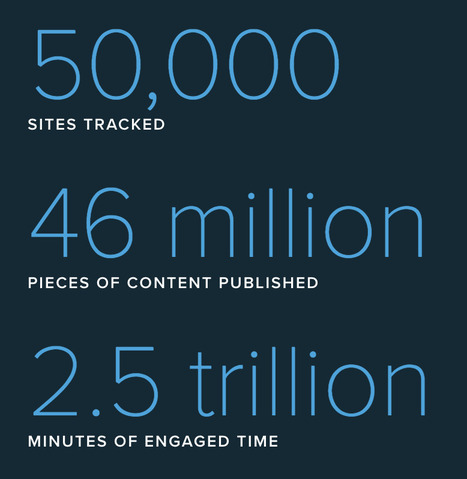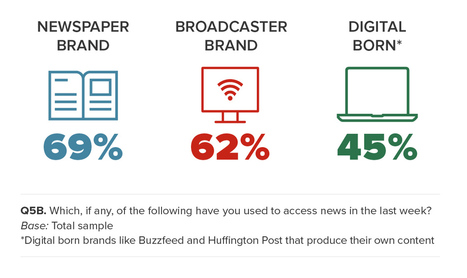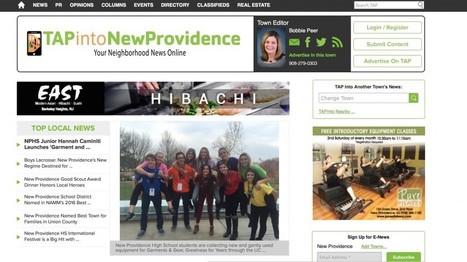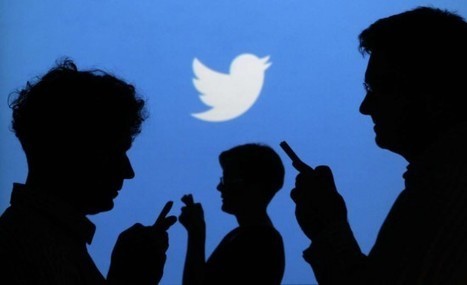 Your new post is loading...
 Your new post is loading...
How do you measure a year in news? 2016 brought political earthquakes in the U.S. and Britain. Police shootings and terror attacks were recorded on cell phones. In pop culture, we collectively mourned for Prince and Carrie Fisher, gaped in astonishment at Sean Penn’s gonzo interview of El Chapo, and celebrated human achievement at the Rio Olympics. Reporters turned these events into stories that drew the attention of millions of readers. A new report out this week from web analytics firm Chartbeat reveals the best of the best — “the stories that defined the breadth, the depth, and the power of journalism in 2016” — drawing on data from more than 50,000 media sites around the world. How does one story stand out in a sea of content? It has to be outstanding journalism. The 102 stories on the list had the most total engaged time — how long online visitors spent actively reading — of all the stories that Chartbeat measured. In total, they commanded 2.5 billion engaged minutes, or almost five millennia of the world’s collective attention. Not surprisingly, the list is dominated by politics, with Nate Silver’s Election Forecast at the top. The top breaking news story is CNN’s coverage of the Orlando nightclub shooting in June. Sports, opinion and entertainment make the list as well....
Mere hours after the putsch in Turkey has failed, it is still too early to understand exactly what went on. Given those constraints, I still want to discuss something which has altered “the game” so much that the existing guidebook needs to be significantly revised. I am not a military strategist, but I have lived through a couple coups in Thailand, so I have some first hand experience of what they look like. The guide book to running a coup is still Luttwak’s Coup d’État, but it needs to be revised to reflect the use of cyberpower. In the same vein, people who talk about cyberpower need to understand what it actually is (hint: it isn’t a stockpile of exploits, it’s the ability to create and maintain advantage.) The Good Coup Guide A coup is basically a sucker punch. The trick is to end the fight before it even begins. The members of the coup are in the minority and a long drawn out fight, even if they win, will not have the trappings of legitimacy or stability. The goal is to have a rapid attack against the existing leadership and replace them before anyone knows what happened. At the same time, the general population needs to be kept out of the way, because large groups of civilians complicate things to no end....
“We really hit a landmark this year,” Newman told the audience, highlighting how – for the first time – more than half of the DNR sample now uses social media for news each week. In tracking this trend, we’ve seen “enormous growth in most markets since 2013,” he added. Key stats: - 51% use social media for news each week.
- 12% say social media is their main news source.
- More 18-24s now prefer social media (28%), as a news source, to TV news (24%).
- 44% of the DNR sample uses Facebook for news each week.
Facebook’s news reach is more than double its nearest rival, You Tube (19%), although the video network plays a prominent news role in some countries. Twitter (10%) meanwhile has an impact due to its popularity with heavy news users and influencers....
Six years ago, at a high school event in suburban New Jersey, Michael Shapiro was covering the story for a hyper-local news site he had founded two years earlier when he spotted a journalist from an established local print newspaper from the same town. “I extended my hand to shake hers,” he recalls, “and she turned around and walked away. People who saw it, their eyes opened wide. They couldn’t believe it.” Those were the early days of Shapiro’s foray into hyper-local news. He was a former lawyer who was building a network of websites covering towns in New Jersey, and some of the state’s old-guard journalists, didn’t like it. Getting the cold shoulder from them, he says, was not unusual. “They saw us as a threat,” says Shapiro. “It was also a matter of, ‘ Who are you to come into my town,’ as if it’s their town.” But things have changed considerably since then. Now, Shapiro presides over a rapidly expanding network of 51 hyper-local franchises dotted throughout New Jersey and, more recently, New York state. (Two more just signed on and will launch this spring. A brief expansion into Pennsylvania failed.)...
|
Since Tuesday’s election, there’s been a lot of finger pointing, and many of those fingers are pointing at Facebook, arguing that their newsfeed algorithms played a major role in spreading misinformation and magnifying polarization. Some of the articles are thoughtful in their criticism, others thoughtful in their defense of Facebook, while others are full of the very misinformation and polarization that they hope will get them to the top of everyone’s newsfeed. But all of them seem to me to make a fundamental error in how they are thinking about media in the age of algorithms. Consider Jessica Lessin’s argument in The Information: "I am deeply, deeply worried about the calls I am hearing, from journalists and friends, for Facebook to intervene and accept responsibility for ensuring citizens are well-informed and getting a balanced perspective…. Facebook promoting trustworthiness sounds great. Who isn’t in favor of accepting responsibility and ferreting out misinformation? But major moves on Facebook’s part to mediate good information from bad information would put the company in the impossible position of having to determine “truth,” which seems far more objective than it really is. Moreover, it would be bad for society.” My response: Facebook crossed this river long ago. Once they got into the business of curating the newsfeed rather than simply treating it as a timeline, they put themselves in the position of mediating what people are going to see. They became a gatekeeper and a guide. This is not an impossible position. It’s their job. So they’d better make a priority of being good at it....
In a television appearance in early June, Michael W. Ferro Jr., the chairman of the newspaper and magazine publishing company Tronc — formerly known as Tribune Publishing — made an astonishing claim.
“Right now we’re doing a couple hundred videos a day,” he said. “We think we need to be doing 2,000 videos a day.”
Mr. Ferro’s comments added to mounting confusion over his embattled company’s sudden rebranding. How could a newspaper publisher create nearly three-quarters of a million videos a year?
But as jarring as Tronc’s goals may sound, the company’s plan is far from novel. In pursuit of more lucrative video advertising and success on dominant social platforms like Facebook, a growing number of publishers have turned to technology that promises to streamline video production, sometimes to the point of near-full automation.
The market for this service is largely split between two companies, Wochit and Wibbitz, which both maintain offices in New York City and Tel Aviv. (Wochit also has an office in London.) Wibbitz’s customers include Bonnier magazines, Hearst, Gannett and the Weather Channel, which uses the service to create local news reports. Customers of Wochit have included Time Inc., CBS Interactive, The Huffington Post, Rotten Tomatoes and NowThis News.
A new comprehensive study, conducted by The Media Insight Project, shows that trust and reliability in news can be broken down into specific factors that publishers can put into action and consumers can recognize. The study also finds that in the digital age, several new factors largely unexamined before — such as the intrusiveness of ads, navigability, load times, and having the latest details — also are critical in determining whether consumers consider a publisher competent and worthy of trust. The specific factors that lead people to trust and rely on a news source also vary by topic, the study finds. How much consumers value a specific component related to trust depends, for instance, on whether they are seeking news about politics or traffic and weather, let alone lifestyle. On some topics, consumers rate in‑depth reporting and expert sources more highly. In others, ease of use is of higher value. For still others, being entertained is more important.And in social media, consumers are fairly skeptical of content and want cues of trustworthiness such as clear identification of the original reporting source. Finally, the study sheds new light on why trust should matter to today’s publishers: It’s not only a journalistic aspiration, but a business imperative. People who put a higher premium on trust‑related factors are more engaged with news, are more likely to pay for it, install news apps, or share and promote news with their friends....
Facebook and Twitter are increasingly becoming news sources for its users, but news is not necessarily the reason why people are logging onto these social networking sites. It just so happens that news ends up being part of the social media experience. That’s according to a new report from the Pew Research Center. "One of the things we saw early on is the degree to which people describe this as 'incidental news...And that's something that's being reinforced." -- Amy Mitchell, director of journalism research for the Pew Research Center The findings cement the fact that both users and news organizations must continue to wrestle with social media, its different features and their implications. “Social media is certainly a part of Americans’ news streams, and it’s going to continue to be a part of that,” said Amy Mitchell, director of journalism research for the Pew Research Center. “And the different ways people connect with these platforms will influence how they learn about their communities and the world.”...
|



 Your new post is loading...
Your new post is loading...



















Chartbeat shares the most -shared stories of 2016 and the numbers are 'uge.